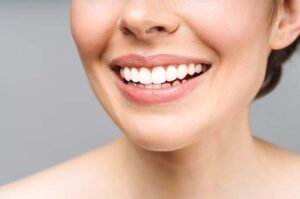Zirconia crowns are a popular choice for people who want to improve the appearance of their teeth. These veneers are made of zirconium, a material that resists staining and discoloration. Zirconia crowns can be used to correct a variety of dental problems, including nicks, cracks, and gaps between the teeth. The process of obtaining a zirconium crown is relatively simple. The first step is to visit your dentist for a consultation. During the consultation, your dentist will evaluate your teeth and decide if zirconia crowns are the best option for you. If so, your dentist will take an impression of your teeth so that the veneers can be customized to fit your smile. The zirconium crown is an ideal type of dental treatment for patients who are white, heat resistant and allergic to metal. Thanks to the light transmission of the zirconium tooth veneer, the dull appearance disappears, providing a more natural and more aesthetic appearance. People who use zirconium tooth coating do not have a sensitivity to hot cold. In addition, it is stronger than metal teeth and is preferred more in anterior teeth due to its natural appearance.
 Zirconium minimizes stains caused by smoking or other reasons, does not cause bad breath, does not cause gum problems and does not cause taste changes in the mouth. The biggest advantage of zirconium teeth is its aesthetic harmony. What makes zirconium so popular is its resemblance to natural teeth. Thanks to this feature, it can be used easily on the front teeth. Thanks to the extraordinary strength of zirconium, it can also be used in the construction of bridge prostheses in the event of multiple tooth loss. Unlike metal-supported porcelains, zirconium- supported porcelains can be used easily in people allergic to metals and do not form gray lines near the gums.
Zirconium minimizes stains caused by smoking or other reasons, does not cause bad breath, does not cause gum problems and does not cause taste changes in the mouth. The biggest advantage of zirconium teeth is its aesthetic harmony. What makes zirconium so popular is its resemblance to natural teeth. Thanks to this feature, it can be used easily on the front teeth. Thanks to the extraordinary strength of zirconium, it can also be used in the construction of bridge prostheses in the event of multiple tooth loss. Unlike metal-supported porcelains, zirconium- supported porcelains can be used easily in people allergic to metals and do not form gray lines near the gums.
Zirconium is a biocompatible and tissue-friendly material. It never fluctuates, does not dissolve in
saliva and does not cause discoloration of the gums like metal-supported dental crowns. It is not affected by acidic, hot or cold foods and drinks. Thanks to its particular structure, it does not cause allergies.
As with other types of dental veneers, first the tooth is shaved without damaging the gingiva, then the tooth is measured using special silicone impression materials and impression trays. In the laboratory, a plaster model is obtained from this measurement. The zirconium veneer of the tooth is prepared on the obtained plaster model. It is often necessary to try in the intermediate stages.During the try-in, the veneer is adapted to the tooth and the necessary corrections are made.


